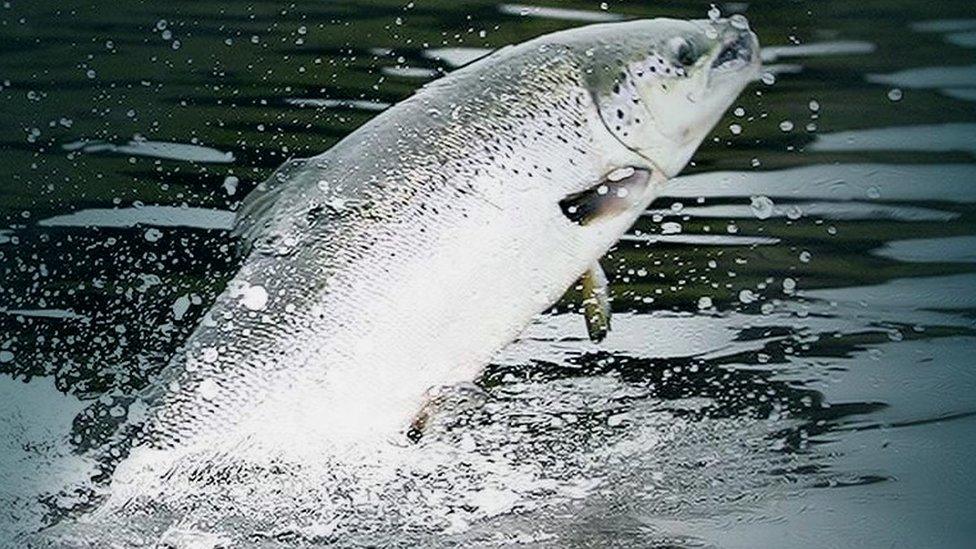Sea lice fail to dent salmon profits
- Published

The weight of Scottish farmed salmon fell in the final three months of 2016 by 4% compared with the year before, new figures show.
The drop was due to the problem of sea lice, which led to fish being harvested at a younger age.
However, a shortage of supply, combined with a global rise in demand, pushed the price of Scottish salmon up by 81%.
Producer Marine Harvest doubled its profits despite a 16% drop in volume for the fourth quarter of 2016.
Global production of Atlantic salmon dropped by 10%, while average prices were up 53% across the sector.
The final three months of the year saw total weight harvested from all Scottish salmon farms drop to 38,700 tonnes.
'Biological performance'
Rising prices also led to a decline in consumption in the European Union by 7%.
The volume of salmon sold into Asian markets declined by 12%, with the lack of large fish from European producers blamed for the drop.
Marine Harvest reported the cost of handling its "biological issues" - including sea lice - rose by 28% per kilogramme of salmon produced, compared with the end of 2015.
"This is mainly due to increased health and feed costs," it stated. "Prior biological challenges have contributed to a high cost level for salmon of Scottish origin also in the fourth quarter."
However, it reported costs were down "due to a general improvement in the biological performance of the fish being harvested".
- Published14 February 2017

- Published29 September 2016

- Published29 March 2016
